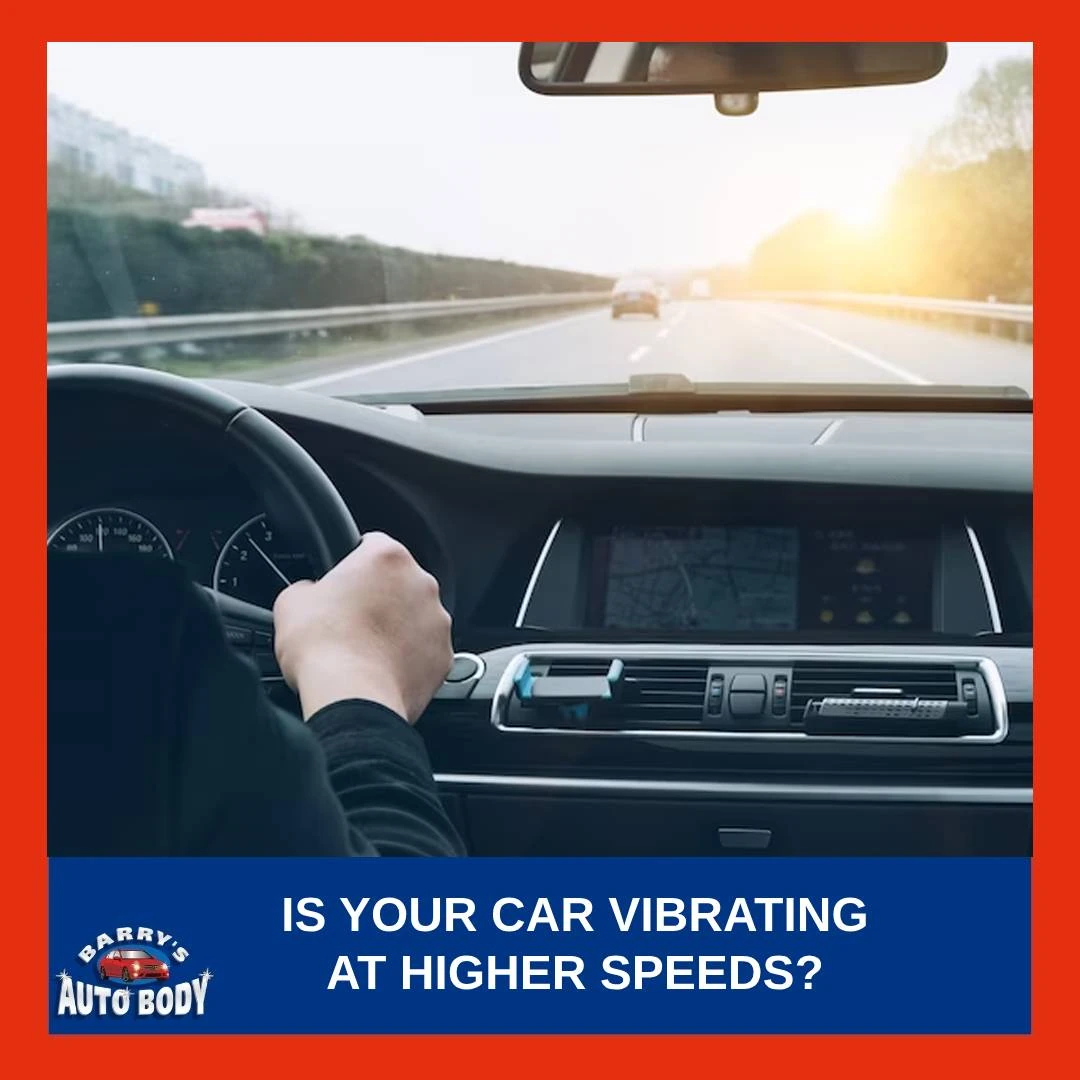You’re cruising comfortably down the highway when suddenly, you feel your steering wheel or seat starting to vibrate noticeably. Initially, you might dismiss it as poor road conditions or a slight tire imbalance. However, persistent vibrations, particularly at higher speeds, can indicate underlying mechanical issues that deserve immediate attention.
Understanding the causes and potential implications of these vibrations is crucial to ensuring your vehicle remains safe and reliable.
In this detailed guide, we’ll explore the common reasons behind these vibrations, why you shouldn’t ignore them, how to identify their sources, and what immediate actions you can take.
Common Reasons Your Car Might Vibrate at Higher Speeds
1. Wheel and Tire Issues
Wheel and tire problems are the most frequent causes of vehicle vibrations.
Unbalanced or Misaligned Tires:
- Tires can become unbalanced over time, particularly after hitting potholes or curbs.
- Misaligned tires can lead to uneven tire wear and reduced vehicle stability.
Damaged or Worn Tires:
- Uneven tread wear, sidewall damage, or internal belt separations can result in vibrations.
Actionable Steps:
- Regularly check tire pressure and ensure it meets your manufacturer’s recommended levels.
- Inspect tires visually for uneven wear or visible damage.
- Schedule regular tire balancing and alignment services as a preventive maintenance measure.
2. Suspension Problems
The suspension system ensures your vehicle rides smoothly. If components wear out or become damaged, vibrations may occur.
Common Suspension Issues:
- Worn shocks or struts cause poor ride quality.
- Damaged control arms, bushings, or ball joints.
Actionable Steps:
- Observe changes in your car’s handling, such as excessive bouncing or unusual noises when driving over bumps.
- Regularly inspect suspension components for signs of wear, rust, or damage.
- Seek professional inspection if you suspect suspension issues, as these can significantly compromise vehicle handling.
3. Brake Issues
Brake-related vibrations typically occur during braking but can occasionally manifest at higher speeds.
Warped Brake Rotors:
- Rotors can warp due to heat and friction, causing vibrations during high-speed braking.
Sticking Brake Calipers:
- A caliper that doesn’t release fully can cause uneven wear and vibrations.
Actionable Steps:
- Pay attention to vibrations, specifically when braking.
- Visually inspect brake rotors for signs of uneven wear or discoloration.
- Schedule regular brake inspections to maintain the integrity of your brake system.
4. Drivetrain and Engine Issues
Components such as the drivetrain and engine mounts play critical roles in vehicle smoothness and stability.
Damaged CV Joints or Axles:
- CV joints or axles damaged by wear or impact can cause rhythmic vibrations.
Loose or Damaged Engine Mounts:
- Engine mounts secure the engine to the frame; worn mounts can transfer excessive vibrations throughout the vehicle.
Actionable Steps:
- Listen for unusual noises when turning or accelerating.
- Perform visual checks for leaking grease around CV joints or visibly damaged engine mounts.
- Professional diagnostics can precisely identify drivetrain issues.
Why Vibrations Should Not Be Ignored
Ignoring persistent vibrations at high speeds isn’t advisable due to several critical reasons:
Safety Implications:
- Vibrations can compromise your vehicle’s stability and handling, particularly in emergencies or at high speeds, thereby increasing the risk of accidents.
Long-term Damage:
- Minor vibrations often signal the development of mechanical issues that can escalate into severe problems if left unaddressed.
Cost Implications:
- Early intervention typically reduces repair costs compared to addressing severe mechanical failures later.
How to Identify the Source of Vibrations
Identifying the source of vibrations requires careful observation and some basic troubleshooting:
- Observe Conditions:
- Note when vibrations occur: at certain speeds, during braking, or when accelerating.
- Inspect Tires and Wheels:
- Look for uneven wear, damage, or bulging.
- Check for Visible Damage:
- Visually inspect suspension components, brake rotors, and drivetrain components for signs of wear or damage.
- Listen for Sounds:
- Note any accompanying noises, such as clicking, grinding, or humming, which may help pinpoint the source of the vibration.
Immediate Steps to Take if Your Car is Vibrating
Taking prompt action can help manage potential problems effectively:
- Perform a Visual Inspection:
- Inspect the tires, wheels, brakes, and suspension visually for any apparent issues.
- Conduct a Safe Road Test:
- Drive your vehicle at different speeds on a safe, quiet road to better isolate the vibration source.
- Document Observations:
- Note specific details, such as when vibrations start and how severe they are, to assist professionals in making a diagnosis.
- Schedule Professional Assessment:
- Even if you suspect a minor issue, a professional check-up can help prevent it from escalating into a more significant problem.
Benefits of Professional Diagnostic Services
Professional services offer significant advantages:
- Specialized Equipment:
- Technicians utilize alignment machines, diagnostic scanners, and balancing machines to detect even the most subtle problems.
- Comprehensive Inspections:
- Thorough checks reveal hidden issues that might not be visible to the untrained eye.
- Safety Assurance:
- Early identification and correction of problems ensure vehicle reliability and safety.
How Barry’s Auto Body Can Assist You
Barry’s Auto Body provides comprehensive support for diagnosing and repairing vibration-related issues:
- Experienced Technicians:
- ASE-certified experts trained to identify and address the root cause of vibrations effectively.
- Advanced Diagnostic Tools:
- State-of-the-art equipment precisely locates and resolves issues.
- Transparent Service Approach:
- Clear, honest communication ensuring you understand what’s necessary and why.
- Commitment to Safety:
- Prioritizing vehicle safety and performance for your peace of mind.
If your vehicle vibrates at higher speeds, Barry’s Auto Body is here to provide reliable solutions and restore smooth, safe driving.
Ignoring vibrations at high speeds can lead to significant safety hazards and expensive repairs. Recognizing potential causes, identifying early signs, and proactively addressing issues ensures your vehicle remains safe, reliable, and comfortable.
Don’t wait until vibrations become severe or dangerous. Schedule your professional inspection at Barry’s Auto Body today. Protect your vehicle’s performance, maintain safety, and drive confidently, knowing your car is in optimal condition.

